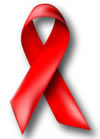
|
Europe's HIV response falls short in curbing the epidemic: 80% more new HIV cases compared to 2004
Copenhagen and Stockholm, 27 November 2014 - A new report by WHO-its first to look at antimicrobial resistance, including antibiotic
resistance, globally-reveals that this serious threat is no longer a prediction for the future, it is happening right now in every
region of the world and has the potential to affect anyone, of any age, in any country. Antibiotic resistance-when bacteria
change so antibiotics no longer work in people who need them to treat infections-is now a major threat to public health.
The HIV epidemic has continued to spread in Europe since 2004 despite advances in medical treatment and new prevention options. In 2013,
more than 136 000 new HIV cases were diagnosed across Europe and Central Asia, according to the most recent data published today by the
European Centre for Disease Prevention and Control (ECDC) and the WHO Regional Office for Europe. This represents an 80% increase
compared to 2004, when almost 76 000 new cases were diagnosed.
Of the new HIV infections in the Region in 2013, more than 105 000 were reported in the countries of Eastern Europe and Central
Asia (EECA), over 29 000 in the European Union and the European Economic Area (EU/EEA) and some 2 000 in other non-EU countries.
Compared to 2004, the EECA countries have seen a two-fold surge in new HIV cases, while the EU/EEA countries have not seen a
decline in HIV diagnoses.
"Europe has not managed to reach the 2015 Millennium Development Goal target to halt and reverse the spread of HIV/AIDS, and time
is running out. While we are increasingly facing emerging health threats, this reminds us that we cannot afford to drop our guard
on HIV/AIDS," says Zsuzsanna Jakab, WHO Regional Director for Europe. "In Eastern Europe, where 77% of all new infections were
reported, two thirds of cases among injecting drug users were detected late. This means they are more likely to transmit HIV,
their treatment is more expensive and they are more likely to die. New WHO guidelines are available for countries to focus
on those at highest risk of HIV infection; they strongly endorse proven harm reduction interventions for people who
inject drugs. By targeting action, we can still turn the tide".
"The question is why we have not seen any significant progress in reducing HIV infections during the last decade. Looking at our data,
we clearly see that across Europe the populations most at risk of HIV infection are not reached effectively enough, particularly men
who have sex with men," explains ECDC Director Marc Sprenger. In the EU/EEA, sex between men is still the predominant mode of
HIV transmission, which accounted for 42% of newly diagnosed HIV infections in 2013. Sprenger adds: "The number of HIV
diagnoses among this group has increased by 33% compared to 2004 - and has been going up in all but four EU/EEA
countries. This is why prevention and control of HIV among men who have sex with men has to be a cornerstone
of national HIV programmes across Europe."
Both directors agree that in order to successfully curb the HIV epidemic in Europe, the response needs to be strengthened and tailored to
each country's specific needs.
While reported AIDS cases showed a steady decline of 48% in the EU/EEA in the past decade, the number of people newly diagnosed with AIDS
increased more than three times in EECA.
Notes to editors
- WHO introduced World AIDS Day in 1988. It is observed annually on 1 December to raise awareness of the AIDS pandemic caused by HIV infection.
- HIV is a virus that attacks the immune system and causes lifelong severe illness with a long incubation period. AIDS, the end-stage of the untreated infection, results from the destruction of the immune system. AIDS is defined by the presence of one or more opportunistic illnesses (due to decreased immunity).
- The WHO European Region comprises 53 countries, with a population of nearly 900 million people, of which approximately 508 million live in the EU/EEA (28 EU Member States plus Iceland, Liechtenstein and Norway). The total number of 136 235 newly diagnosed infections includes more than 56 000 diagnoses in 2013 reported to ECDC and WHO and nearly 80 000 new cases published by the Russian Federal Scientific and Methodological Centre for the Prevention and Control of AIDS.
- The new WHO Consolidated guidelines on HIV prevention, diagnosis, treatment and care for key populations were released in July 2014. The guidelines outline steps for countries to reduce new HIV infections and increase access to HIV testing, treatment and care for five key populations - men who have sex with men, people in prison, people who inject drugs, sex workers and transgender people.
###
For further information, contact:
Cristiana Salvi
WHO/ Europe
Tel.: +45 45 33 68 37
E-mail: csa@euro.who.int
ECDC press office
Tel.: +46 (0) 8 58 60 16 78
Source: http://www.euro.who.int/en/media-centre/sections/press-releases/2014/europes-hiv-response-falls-short-in-curbing-the-epidemic-80-more-new-hiv-cases-compared-to-2004
For more HIV and AIDS News visit...
Positively Positive - Living with HIV/AIDS:
HIV/AIDS News
|